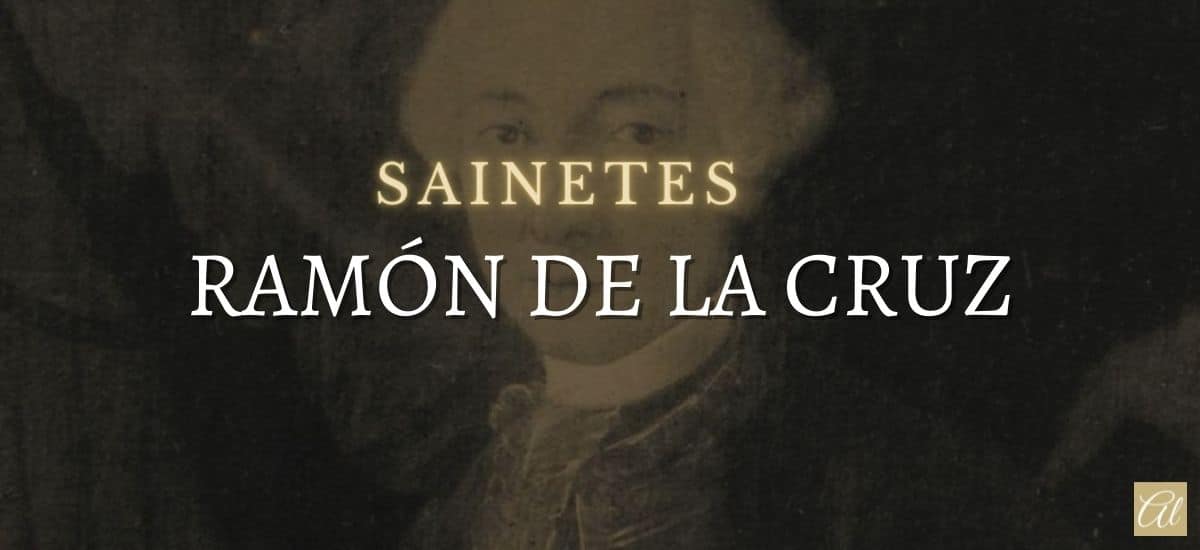
Ramon de la Cruz was born in Madrid on March 28, 1731 and is a faithful representative of the time of Carlos III with the Illustration in the middle. And, in particular, he was the creator of a new form of sainete, where a vivid portrait of the Madrid society of its time. We review his figure and work.
Ramon de la Cruz
Castizo from now called Barrio de las Letras, he was baptized in the church of San Sebastián and his parents lived on Prado Street, near the Teatro del Príncipe. He had a great activity like translator of comedies, especially French. He also translated and adapted Italian operas and was the author of tonadillas and zarzuelas.
About the Illustration
There are conflicting opinions of some critics about his attitude towards the Enlightenment. Some talk about what did not have the approval or friendship of other illustrated authors, for example, Moratín Sr., who considered him representative of a popular theater with little taste. And others say that was illustrated in his own way, although he ended up dedicating himself only to the sainetes.
But there are also critics who found a relationship Among those aims proposed by the illustrated ones and those of Ramón de la Cruz, since his sainetes, with the didactic and moralizing touch that he gave them, were the best method of making this criticism of the vices and other customs of the eighteenth century.
In addition, when Ramón de la Cruz collected all his works he had among his followers to some of the most relevant authors such as Gaspar Melchor de Jovellanos o Go away.
skits
They are part of that popular line that was so successful in the XNUMXth century. As a genre, and in principle, they meant the same as hors d'oeuvres, and from those of Ramón de la Cruz their parameters are followed. In general, they have a short plot, without a very stuck plot, with a dialogue between characters with comic elements belonging to the lower-middle class. Of course, that comedy does not remove the more or less moralizing tone. And its value lies in the fact that it is a social realist document of the time.
The sainetes of Ramón de la Cruz, who wrote about 350, fall for the most part within those classified as critics or customs. Descriptive and with a little elaborate plot, they do not delve into the characters and focus more on the reality of the moment they are telling. The greatest merit is in that, taking reality and transferring it to the tables.
The characters that he usually uses are also repeated in most of the sainetes. So they are:
- The fop or the fop: to the one who puts with all the French customs, of middle social class, without values and to whom he always ridicules.
- The majo and the maja: opposite to the previous one, it represents the autochthonous tradition and the values of the authentic man, that also called pimp, haughty and boastful.
- He used: the gentleman of the time.
- The courtship: or that carefree heartthrob who is always courting the ladies.
- The abbe: a figure with an effeminate touch who appears surrounded by ladies and who is also lazy and lives off others.
- The page: an observer of the rest of the characters.
The Manolo
Perhaps the best known and most representative of the parodic sainete, since his technique consists in pleading the characters: Uncle Matute, his wife, Manolo, La Primilgada, etc. And it puts that contrast between the rhetorical style and the popular style, because everyone makes speeches using vulgar terms that are mixed with the hendecasyllable rhythm.
It also contrasts the figure of the hero with the image of the pimp in its protagonist, Manolo, and its main purpose is scoff at the concept of honor.
Other sainetes
Ramón de la Cruz also made them derived from his polemics with others illustrated as What is your enemy o The boring poet. The of figures, conceived to censor the vices of the time, such as The hospital or the fools o The bridal store.